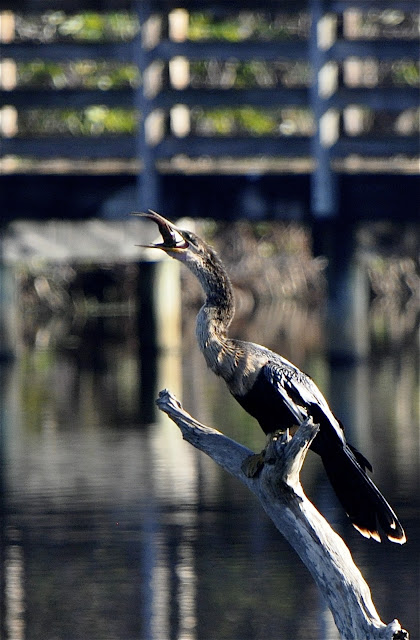Most of the photos were taken at the Wakodahatchee Wetlands. The heat of the day had driven much of the wildlife into the shade by the time that we got to the Green Cay Nature Center.
Next we come to the Great Blue Heron - so majestic and regal looking. Nests everywhere!
 |
| I admit to having a bit of "Lens Envy" while there. |
While not a great shot, this is a Green Heron.
We saw many of these last year - The Great Egret. Also very regal and graceful.
This little guy was amazing - the American Bittern - as he walked his neck and body undulated from side to side. I tried looking up why that is, but couldn't find anything.
We had the great good fortune of being treated to the Roseate Spoonbill. Not often seen at this location, the Spoonbill held court for quite some time. I don't know if this is a male or female, but it is so interesting to look at - its bill is so odd shaped in comparison to all of the other birds that we saw - but its colors - exquisite. It's color is diet-derived and it uses its spoon-shaped bill to sift easily through mud. It feeds on crustaceans, aquatic insects, frogs, and newts. http://en.wikipedia.org/wiki/Roseate_Spoonbill

 |
| The Tri-colored Heron, and the Roseate Spoonbill are often seen searching for food together. |
Whistling Ducks
Young Anhingas
Teal-Winged Duck
Tri-Colored Heron
Lastly - The While Ibis - often seen in groups like this.
We had such a wonderful day - hearing all kinds of sounds - seeing all kinds of birds and nests. I hope that we will visit there again!


























Thanks for bringing us such a beautiful array of winged creatures. My favorite is the Roseate Spoonbill. You'd make a wonderful tour guide ;)
ReplyDelete